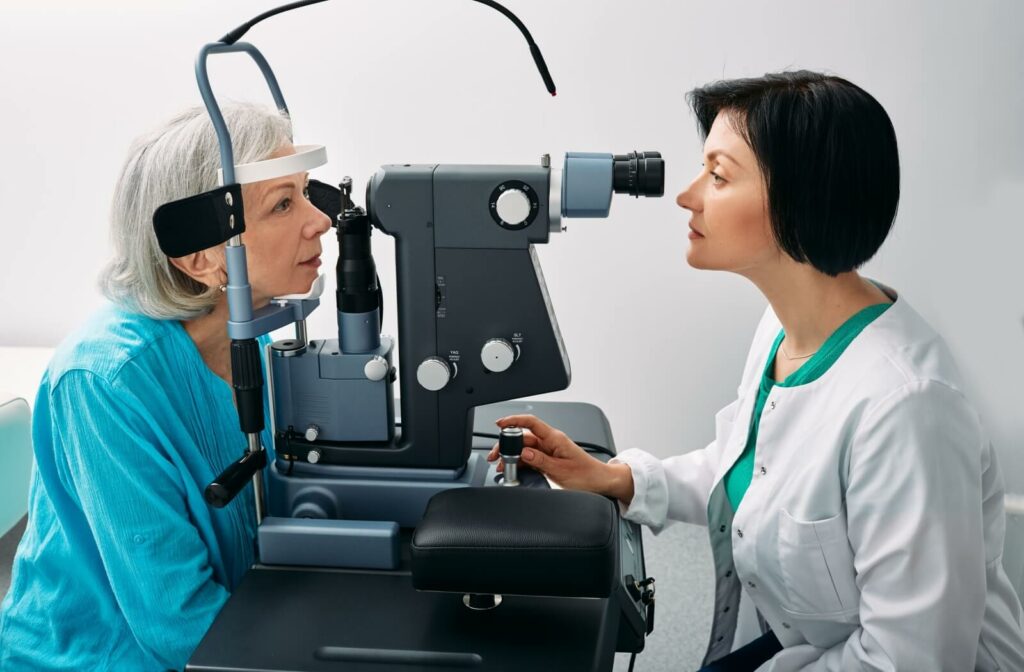Comprehending the Comprehensive Duty of an Eye Doctor in Modern Eye Treatment
With innovations in technology and a boosting focus on precautionary treatment, eye doctors are important in identifying and taking care of persistent eye conditions, while additionally involving in very early disease discovery. How do these obligations converge with their function in promoting total eye health, and what does this mean for person outcomes in a collective healthcare setting?
Expanded Scope of Method
Recently, the duty of eye doctors has advanced dramatically, with numerous experts currently welcoming an increased range of method that prolongs past conventional eye exams. This development mirrors the expanding acknowledgment of eye doctors as primary medical care service providers in the field of eye treatment. Their responsibilities currently incorporate a wide variety of services, including recommending medicines for eye problems, handling chronic eye illness, and carrying out minor surgical treatments. This shift has actually been driven by advancements in optometric education, enhanced medical training, and the enhancing requirement for thorough eye care solutions, particularly in underserved areas.
Additionally, eye doctors are now extra associated with collective care, working closely with ophthalmologists, medical care medical professionals, and various other healthcare professionals to ensure holistic person care. This interprofessional partnership is essential in handling intricate situations that need a multidisciplinary technique. Furthermore, optometrists are playing an essential role in public health and wellness campaigns, such as vision screenings and eye health and wellness education, targeted at enhancing community health and wellness end results.
The broadened extent of method for eye doctors not just enhances their ability to offer comprehensive treatment but also addresses the expanding need for available and efficient eye care solutions, adding to total health care improvements.
Early Disease Discovery
Early discovery of eye illness is increasingly becoming a centerpiece in the increased role of eye doctors. As primary eye treatment suppliers, optometrists are uniquely placed to recognize early indicators of ocular conditions such as glaucoma, macular degeneration, diabetic person retinopathy, and cataracts. This crucial role is essential, as very early medical diagnosis can dramatically improve the management and diagnosis of these problems, potentially stopping vision loss and improving client results.
Optometrists use extensive eye evaluations to spot subtle modifications in vision and eye health and wellness. The ability to recognize very early indications of systemic wellness issues, such as hypertension and diabetes, via eye indications even more highlights the value of routine eye check-ups.
Moreover, eye doctors play a vital function in individual education, stressing the value of routine eye assessments as part of total health and wellness maintenance. By fostering a proactive approach to eye treatment, optometrists contribute dramatically to public health and wellness, making sure illness are caught and managed properly before they can advance.
Advanced Diagnostic Techniques
Advanced analysis techniques have changed the practice of optometry, making it possible for specialists to detect and keep an eye on eye diseases with unmatched precision. These advancements have actually changed the optometric landscape, allowing for a lot more innovative assessment and intervention methods. Technologies such as optical comprehensibility tomography (OCT) offer high-resolution, cross-sectional photos of the retina, assisting in very early discovery of problems like glaucoma and macular deterioration. This non-invasive method has come to be essential in modern optometry, offering detailed understandings right into retinal layers.
An additional critical innovation is electronic retinal imaging, which captures detailed sights of the retina making use of high-definition cams. This technology is critical in identifying changes in retinal structure with time, thereby helping in the management of conditions like diabetic person retinopathy. Visual field testing, improved by computer-aided systems, enables for specific mapping of a person's line of vision, crucial in detecting and tracking glaucoma development.
Corneal topography, another remarkable analysis tool, creates topographic maps of the cornea's surface. This is particularly useful in suitable call lenses and intending refractive surgical treatment. These advanced diagnostic strategies jointly click over here enable optometrists to give aggressive, targeted care, guaranteeing far better individual results and reinforcing their essential function Click Here in eye wellness monitoring.
Managing Chronic Eye Conditions
Taking care of chronic eye problems is a foundation of optometric care that calls for an extensive understanding of different eye diseases and their long-lasting implications. Eye doctors play a crucial function in handling, monitoring, and diagnosing conditions such as glaucoma, diabetic person retinopathy, and age-related macular degeneration. These conditions, if left untreated, can bring about considerable visual disability or blindness, highlighting the vital relevance of recurring care and monitoring.
Eye doctors use a variety of diagnostic devices, including optical coherence tomography (OCT), aesthetic area testing, and fundus digital photography, to evaluate the progression of these persistent conditions. By carefully keeping track of modifications in eye wellness, eye doctors can adjust treatment strategies to mitigate illness progression. This might involve recommending drugs, advising lifestyle modifications, or coordinating with ophthalmologists for medical treatments when essential.

Duty in Preventive Treatment
Precautionary treatment is a fundamental aspect of optometry that focuses on keeping eye health and wellness and stopping the beginning of ocular conditions. Optometrists play a vital role in very early detection and prevention, using routine eye evaluations to identify danger elements and refined modifications in ocular wellness. Eye Doctor Optometrist. These assessments are not merely concerning vision adjustment but incorporate an extensive assessment of eye features and structures, making it possible for the identification of problems such as glaucoma, cataracts, and macular degeneration at a beginning
Along with diagnostics, optometrists enlighten clients on way of living options that promote eye wellness, such as proper nourishment, check my reference UV protection, and the value of regular eye examinations. They advise on the right use electronic devices to stop electronic eye strain, an expanding concern in the electronic age. Eye doctors also supply advice on protective eyeglasses for job-related and recreational activities, reducing the threat of injury.
Preventative eye care encompasses systemic health and wellness concerns that manifest in the eyes, such as diabetes and hypertension. By working together with various other medical care professionals, optometrists contribute to alternative person treatment, emphasizing the interconnectedness of ocular and systemic health and wellness. This aggressive strategy is important in securing aesthetic skill and general health.
Verdict
Optometrists currently inhabit a crucial duty in modern eye treatment, characterized by an expanded scope that includes detecting and managing persistent eye problems, suggesting drugs, and executing small procedures (Opticore Optometry). Their knowledge in early disease discovery is boosted by innovative analysis methods such as optical coherence tomography and digital retinal imaging. By stressing preventative treatment and person education and learning, optometrists contribute significantly to overall eye wellness, teaming up with other healthcare professionals to make certain effective and comprehensive person results

In addition to diagnostics, eye doctors educate people on way of life selections that promote eye health and wellness, such as proper nutrition, UV defense, and the significance of normal eye check-ups.Preventative eye care prolongs to systemic wellness concerns that show up in the eyes, such as diabetes and high blood pressure.Optometrists currently occupy an essential duty in contemporary eye treatment, identified by an expanded range that consists of diagnosing and handling persistent eye problems, prescribing medicines, and doing small surgical procedures.
Comments on “Why Picking an Eye Doctor Optometrist is Vital for Your Eyes”